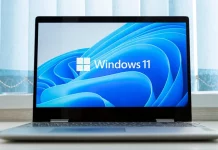From October 14, 2025, Microsoft will no longer support Windows 10 with new features, troubleshooting aids, or security updates. This is because Microsoft follows a ten-year lifecycle support policy, and since Windows 10 was released in 2015, that period has now ended. Ending official support allows Microsoft to focus their efforts on Windows 11. Naturally, this event has sparked many discussions, and you’ve likely heard chatter about it recently. The prevailing message is that if you continue to use Windows 10 past this date, you become “vulnerable” and should upgrade immediately. This is largely true.
If you want to remain protected on Windows 10, you can sign up for Microsoft’s Extended Security Updates (ESU) program, which offers coverage for at least one more year. Otherwise, the main recommendation from tech experts and Microsoft is to upgrade to Windows 11. However, Windows 11 comes with more stringent hardware requirements, including the need for a Trusted Platform Module (TPM), typically found on computers made after 2016. If your device is older, it may not support the upgrade, which means you might need to buy a new system. There are workarounds to install Windows 11 on unsupported hardware, but they are not officially recommended. If you dislike Windows 11, it’s also possible to remove Microsoft Copilot, its built-in AI assistant.
Do you really need to upgrade right now? Microsoft has been clear for a long time about the end of Windows 10 support and often reminds users of this approaching deadline. The reality is that no new updates, security fixes, or feature changes will be provided after October 14, 2025. This means any new vulnerabilities discovered won’t be patched unless Microsoft decides otherwise, similar to how Windows XP received a security update years after its official support ended. While you can opt for the extended security updates, Windows 10 will still function without them.
If you choose to continue using Windows 10, it’s crucial to practice safe computing: avoid installing untrusted software, keep your browser and apps updated, maintain strong passwords with two-factor authentication, and regularly back up important data. Many of these good security habits apply even if you switch to Windows 11. Additional protections include using a security-focused router, robust anti-malware software, or third-party patch services like 0Patch for unofficial vulnerability fixes.





